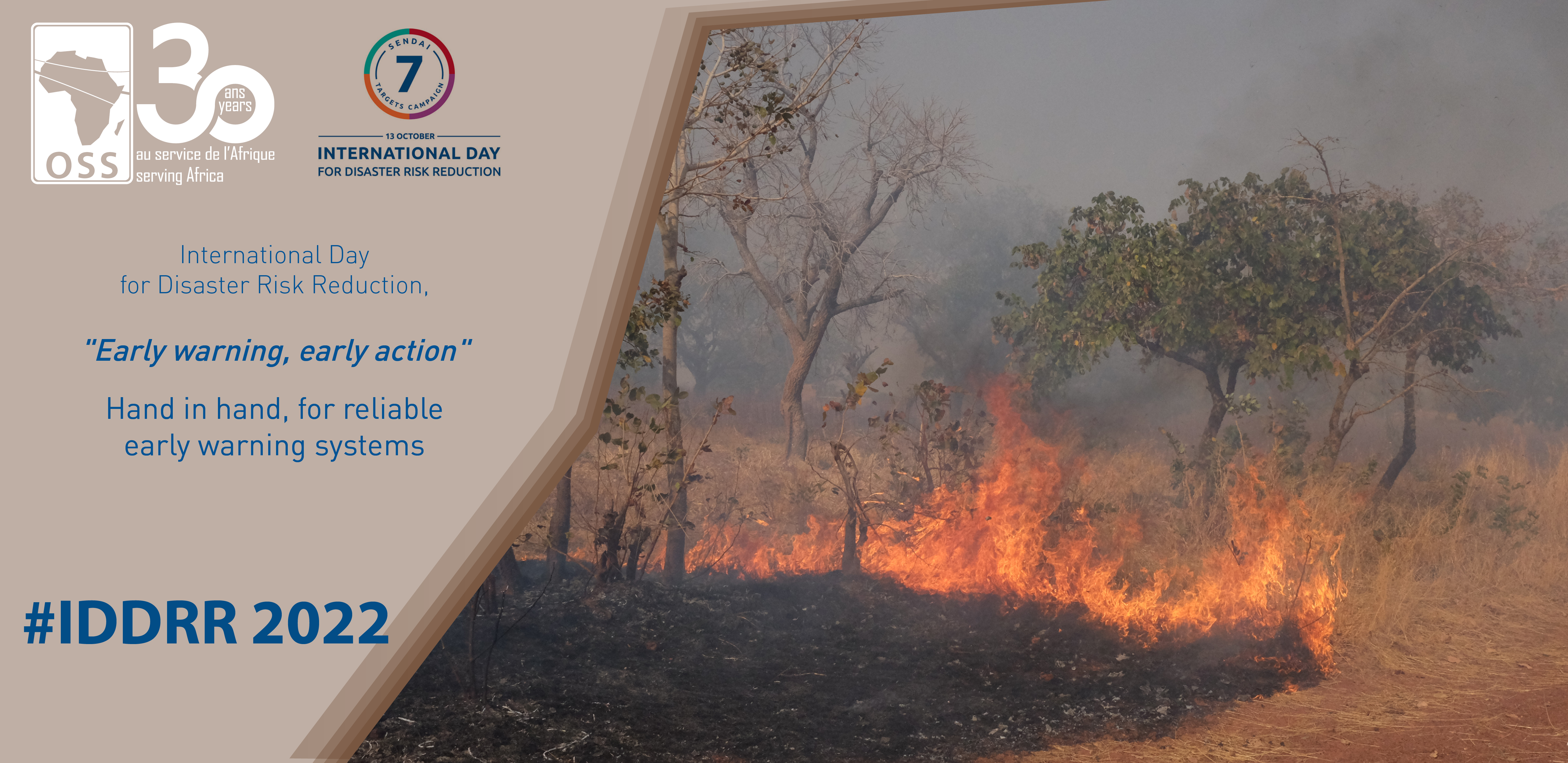Thursday, October 13, the international community is warning of the disaster risks, on the occasion of the International Day for Disaster Risk Reduction in an increasingly worrying global context.
Early warning, early action - Hand in hand, for reliable early warning systems

Thursday, October 13, the international community is warning of the disaster risks, on the occasion of the International Day for Disaster Risk Reduction in an increasingly worrying global context.
This Day is the ultimate meeting for developing the culture of resilience and risk management. It aims to “promote a global culture of natural disaster prevention” (United Nations General Assembly).
First, to put things in context, the United Nations General Assembly decided in 1989 to declare, every second Wednesday of October, the International Day for Disaster Risk Reduction because of the ever-increasing damage caused by natural hazards and disasters. A choice that was voiced during the International Decade for Natural Disaster Risk Reduction (1990-1999). This day began to be celebrated on October 13 starting from the year 2009.
The Sendaï Framework for Action (2015 – 2030) of the United Nations Office for Disaster Risk Reduction (UNDRR formerly UNISDR), is currently the world roadmap for reducing disaster risks. It aims to minimize the existing risks and keeping new ones from appearing. This year’s International Day for Disaster Risk Reduction is all about Target G of the Sendaï Framework for DRR : "Enhancing the accessibility to multi-risk early warning systems and risk information to everybody by 2030".
How are things going in Africa ? African communities are disproportionately vulnerable to disasters due to several factors, namely population growth and urbanization. Climate change considerably exacerbates such a vulnerability as well as the risk of climate-related hazards (droughts, heat waves, storms, floods, etc.). Since 2010, there has been a sharp increase in the number of natural disasters as almost 70% of them took place between 2017 and 2021. Floods represent 33% of all reported disasters and are the most frequent event. Besides, according to estimates, more than 118 million Africans living in extreme poverty will undergo severe climate events, by 2030.
The impacts are quite worrying, particularly in terms of food security. Indeed, efforts to eliminate hunger, poverty and implement sustainable development are strongly weakened ; besides, agriculture is heavily impacted by the occurance of the disasters. In addition, a lot of people believe that natural hazards are at the origin of the displacements and movements of populations. In 2017, nearly 280 million people had to migrate, including 171 million abandoning their land following natural disasters, according to the United Nations. Let us take the example of Niger, in 2012, some 540,000 people moved nationally, in 2021, they were 118,000 to leave. In addition, if no action is taken to put an end to climate change, a billion people will have to leave and flee the increasingly adverse effects by the end of the century.
Even if it seems impossible to put a halt to such phenomena, the populations vulnerability can be reduced and the consequences of these disasters limited.
The Sahara and Sahel Observatory, is highly committed to its mission and strongly involved in the reinforcement of resilience to climate change. It makes every effort to set up and operationalize different early warning systems. Indeed, it already came up with the prototype of the early warning system for drought in the Maghreb (Algeria, Morocco and Tunisia), in 2010. This system is supposed to collect, analyse and summarize data on climate and agro-economic parameters and indicators with the aim of providing timely-information, on the threat of periods of drought, and therefore, to deliver appropriate responses.
Besides, the OSS fully complies with the Sendaï framework and decided to extend its experience to the sub-regions of Africa. Our organization is developing a drought, flood and wildfire multi-risk early warning system in West Africa and more specifically in the W-Arly-Pendjari (WAP) complex. Bringing this system to exploitation will make it possible to address emergency situations, by allowing users and stakeholders to develop plans of action, make informed decisions and thus be able to face the multiple disaster risks threatening the ecosystems and populations of the complex.
A similar experience is being implemented in East Africa. It aims to increase the resilience of smallholder farmers and breeders to the climate change risks, namely drought, through the establishment of appropriate early warning systems and the implementation of drought adaptation actions.
This international day is therefore the perfect event to call for the establishment of early warning systems at national and regional levels to promote a network approach to disaster risk management and to strengthen the climate resilience of the African continent.
Malak CHALBI
Agricultural Engineer, Master in Management of Natural Ecosystems,
Sahara and Sahel Observatory
